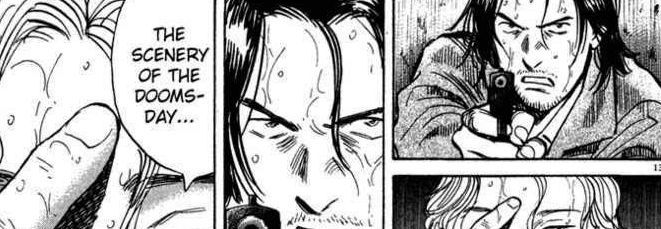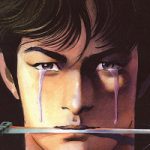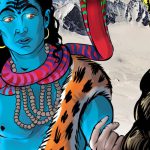Monster
Regions: Japan

Created by Naoki Urasawa and first serialized in the Japanese manga magazine Big Comic Original in 1994, Monster, along with Katsuhiro Otomo’s Akira (1982) and Masamune Shirow’s Ghost in the Shell (1989), has become one of the most sought after twentieth century Japanese comic properties by English-language filmmakers since the series was first available in English in 2006. Beginning in West Germany just three years before the fall of the Berlin Wall, the series focuses on Dr. Kenzō Tenma, a successful Japanese surgeon whose career and social standing are completely upended when he saves the life of Johan, a young boy over a dying politician. As the story progresses, Tenma discovers that Johan was an eugenically engineered East German military experiment who has not only developed into a murderer as an adult, but is involved in a far wider conspiracy which Tenma’s conflicted conscience drives him to intervene and stop. As a character-driven psychological exploration of redemption, Monster adds more layers of complexity through suspenseful storytelling involving Tenma being framed for the human carnage left in Johan’s homicidal wake.
As one of the most celebrated series in Japan to appear in English, Monster continues the international, humanist outlook of characters and settings that the translated works of Osamu Tezuka are now recognised as contributing to the post-War resurgence of manga. Urasawa’s surgeon hero Dr. Tenma not only borrows his name from the creator of Astro Boy, but also owes much to the medical narrative of Tezuka’s Blackjack (1973). Likewise, Tezuka’s MW (1976) and Message to Adolf (1983), one of the first of Tezuka’s works to be translated into English, were strong influences on Urasawa’s Monster and Master Keaton (1988) manga series. Both rework Tezuka’s thematic engagement with Japan’s post-War legacies as well as provide Japanese perspectives on how the return of the past challenges the present in the shaping of national identity. According to Junot Díaz, the Pulitzer Prize-winning, Monster and Master Keaton deserve serious attention as social and historical examinations of post-Cold War history as they explore the conflicted and contradictory nature of personal memories and larger international histories.
Concluding its original serialisation by the publisher Shogakukan in 2001, Monster has sold more than 25 million copies in Japan and has been translated into Chinese, Dutch, German, French, Korean and Spanish. With the final instalment of the English translation by Viz Media of Monster in 2008, Urasawa’s series had garnered a number of prestigious Japanese and English-language awards and nominations. Although an anime series has been produced (2004) and released in English-speaking countries, more than one American media studio has attempted to secure rights to Monster for developing into a live action adaptation, with some famous creative translators of comics into film tied to the studio projects. Among them Josh Olson, who adapted the screenplay of the graphic novel A History of Violence (1995) and the Mexican director Guillermo del Toro responsible for film versions of the Marvel and Dark Horse comic properties Blade and Hellboy.
— Mio Bryce and Jason Davis
Further Reading
- Granville, Shannon. “Exploring Master Keaton’s Germany: A Japanese Perspective on the End of the Cold War.” In After the Berlin Wall: Germany and Beyond. Edited by Katharina Gerstenberger and Jana Evans Braziel. New York: Palgrave Macmillan: 37-58. 2001. Print.
- Ishii, Anne. “Medical Manga Comes To America.” Canadian Medical Association Journal, 180: 542-43. 2009. Online.
- Penney, Matthew. “Rising Sun, Iron Cross – Military Germany in Japanese Popular Culture.” Japanstudien, 17: 165-187. 2005. Online.
- Rosenbaum, Roman. “Tezuka Osamu’s Postcolonial Discourse Towards a Hybrid National Identity.” In Postcolonial Comics: Texts, Events, Identities. Edited by Benita Mehta and Pia Mukherji. New York: Routledge: 59-13. 2015. Print.


